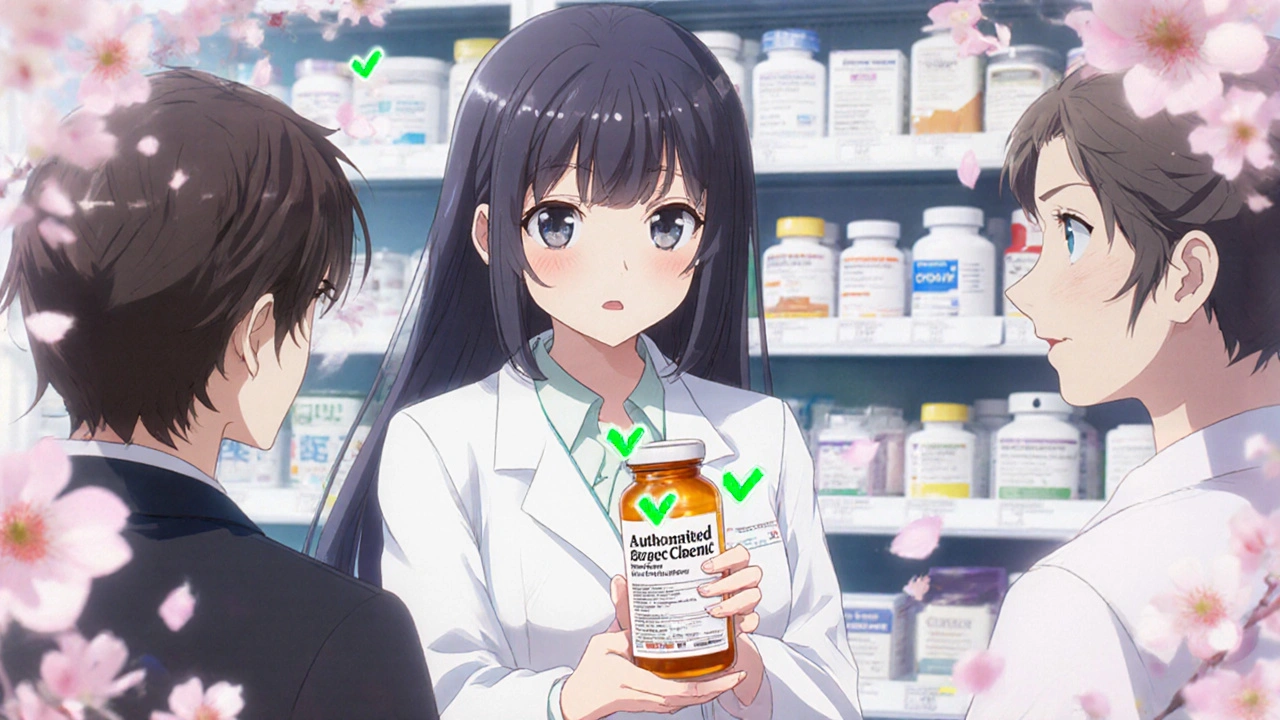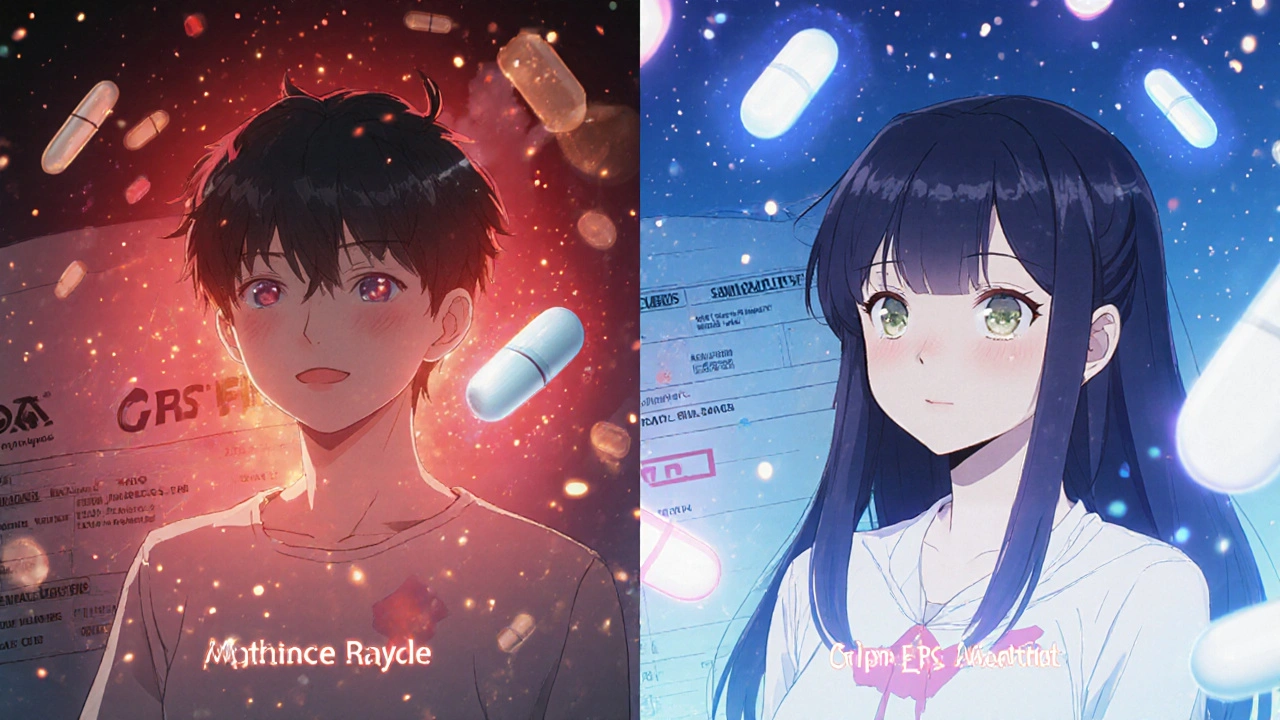When your doctor says it’s time to switch from your brand-name medication to a cheaper generic, you might feel confused. Is the generic just as good? Should you ask for the authorized generic instead? And what even is the difference between an authorized generic and a regular generic? These aren’t just pharmacy jargon - they can affect how you feel, how much you pay, and whether your treatment works as expected.
What’s the Real Difference Between Authorized and Regular Generics?
An authorized generic is the exact same pill, capsule, or injection as the brand-name drug - same active ingredient, same inactive ingredients, same factory, same manufacturing process. The only difference? It doesn’t have the brand name on the label. For example, if you take Celebrex for arthritis, the authorized generic is made by Pfizer, the same company that makes Celebrex. It’s identical down to the lactose and povidone in the tablet. Regular generics, on the other hand, are made by different companies. They have the same active ingredient - say, celecoxib - but the fillers, binders, and coatings can be different. That’s allowed under FDA rules. As long as the generic delivers the active drug into your bloodstream within 80-125% of the brand’s rate, it’s considered “bioequivalent.” That sounds scientific, but it means a regular generic could absorb 25% slower or faster than the brand. For most people, that’s fine. For others, it’s a problem.Why Does This Matter for Switching?
If you’re taking a medication with a narrow therapeutic index - meaning the difference between a helpful dose and a dangerous one is tiny - even small changes in how the drug is absorbed can cause issues. Think epilepsy, thyroid disorders, blood thinners like warfarin, or immunosuppressants after an organ transplant. A 2018 study in the Journal of Managed Care & Specialty Pharmacy tracked over 5,000 people who switched from brand to generic. The results? Overall, regular generics performed just as well. But when patients switched from brand to a regular generic for lamotrigine (used for seizures), some had breakthrough seizures. When they switched back to the authorized generic - made by the original brand - the seizures stopped. That’s not rare. One Reddit user with epilepsy wrote: “Switched to a regular generic, had two seizures in three weeks. Switched to the authorized version - zero issues for 18 months.” The American Academy of Neurology officially recommends avoiding automatic substitution for drugs like lamotrigine. Why? Because the inactive ingredients can change how the drug dissolves in your gut. A pill with different binders might not break down the same way, even if the active ingredient is identical.Cost: The Big Trade-Off
Here’s the catch: authorized generics aren’t cheap. They’re usually 10-30% cheaper than the brand-name version, but they cost 5-15% more than regular generics. Take Concerta, the brand-name ADHD medication. The brand costs about $210 for a 30-day supply. The regular generic? Around $165. The authorized generic? $185. That’s $20 more than the regular version. For someone on a tight budget, that difference matters. But for someone who had bad reactions to the regular generic - nausea, dizziness, or reduced effectiveness - that $20 might be worth it. A 2023 GoodRx survey of 5,000 people found that 18.7% had problems switching to regular generics. Common complaints? Stomach upset (42%), feeling like the drug didn’t work as well (33%), or new side effects (25%). Only 6.2% of people who switched to authorized generics reported issues. But 68% of those people said their main complaint was cost - not safety.
What Do Experts Say?
Dr. Aaron Kesselheim, a professor at Harvard Medical School, puts it simply: “For most drugs, regular generics are fine. But for thyroid meds, epilepsy drugs, and transplant medications - go for the authorized generic if you can.” The FDA says generics are safe and effective. And they’re right - 92% of all prescriptions filled in the U.S. are for regular generics. Most people never notice a difference. But the FDA also admits that inactive ingredients can affect how a drug works - especially in complex delivery systems like extended-release pills, inhalers, or topical creams. Dr. Lee Vermeulen, former president of the American Pharmacists Association, warns: “Just because a generic meets FDA standards doesn’t mean every patient will respond the same way. Real bodies aren’t lab models.” The American College of Clinical Pharmacy agrees: switching should be personalized. If you’ve been stable on your brand-name drug for years, don’t switch unless you have to. If you do switch, ask your pharmacist: “Is this the authorized generic?”How to Spot an Authorized Generic at the Pharmacy
You won’t see “authorized generic” on the bottle. It’s not required. But there are clues. Look at the National Drug Code (NDC) number on the label. If it matches the brand-name drug’s NDC, it’s the authorized version. Ask your pharmacist to check. Many don’t know the difference - a 2021 study found 47% of patients couldn’t tell them apart. You can also check GoodRx’s Medication Switch Checker or the FDA’s Orange Book. The Orange Book lists regular generics and their bioequivalence ratings. Authorized generics don’t appear there because they’re not submitted under the generic approval pathway - they’re sold under the original brand’s approval. Some pharmacies will label them as “Same as [Brand Name]” or “Manufactured by [Brand Company].” But don’t assume. Always ask.When Should You Choose the Authorized Generic?
You should consider the authorized generic if:- You’ve had a bad reaction to a regular generic - nausea, dizziness, reduced effectiveness, or worsening symptoms.
- You take a drug with a narrow therapeutic index: lamotrigine, levothyroxine, warfarin, cyclosporine, or phenytoin.
- You’re on a stable regimen and switching caused problems before.
- Your insurance covers it at a reasonable price - sometimes it’s only $5 more than the regular generic.

What About Insurance and Coverage?
Insurance plans love regular generics. They’re cheaper. Many push them as the default. Some won’t cover authorized generics unless you prove the regular one didn’t work. Ask your insurer: “Is the authorized generic covered under my plan?” If not, ask your doctor to write “Do Not Substitute” on the prescription. That legally blocks the pharmacist from swapping it out. Starting in 2024, Medicare Part D plans are required to tell you if an authorized generic is available for your drug. That’s new. And it’s helping more people make informed choices.Bottom Line: It’s Not About Cheap - It’s About Consistent
The goal isn’t to always pick the cheapest option. It’s to pick the one that keeps you stable, safe, and symptom-free. If you’ve never had a problem with generics, stick with the regular one. Save the money. But if you’ve ever felt “off” after switching - even slightly - don’t ignore it. Ask for the authorized generic. It’s not magic. It’s just the same pill you were already taking, without the brand name. Your body remembers how your medication used to feel. If the new version doesn’t feel right, it’s not in your head. It’s in the fillers, the coating, the way it dissolves. And you deserve a version that works like the one you know.Frequently Asked Questions
Are authorized generics safer than regular generics?
Authorized generics aren’t inherently safer - they’re identical to the brand-name drug. Regular generics are also safe and meet FDA standards. But for people sensitive to inactive ingredients, authorized generics reduce the risk of unexpected side effects or reduced effectiveness. If you’ve had problems switching before, an authorized generic is the safest option.
Can I ask my pharmacist for an authorized generic?
Yes. You can ask your pharmacist to fill your prescription with the authorized generic if it’s available. You may need to pay a little more, but it’s your right to request it. If they say it’s not covered, ask your doctor to write “Dispense as Written” or “Do Not Substitute” on the prescription.
Why aren’t authorized generics more common if they’re identical to the brand?
Brand manufacturers make authorized generics to keep market share after their patent expires. But they don’t want to undercut themselves too much - so they price them higher than regular generics. Since most people choose the cheapest option, authorized generics make up only about 8% of generic prescriptions, even though they’re available for 25% of off-patent drugs.
Do authorized generics work faster or better than regular generics?
No. They don’t work faster or better - they work the same. Because they’re identical to the brand-name drug, they behave exactly the same in your body. Regular generics are designed to be bioequivalent, which means they’re close enough for most people. But for those who are sensitive, even small differences in inactive ingredients can make a difference in how they feel.
How do I know if my drug has an authorized generic?
Check GoodRx’s Medication Switch Checker, or ask your pharmacist for the National Drug Code (NDC) on your prescription. If the NDC matches the brand-name version, it’s the authorized generic. You can also search the FDA’s Orange Book - but remember, authorized generics don’t appear there. Only regular generics do.


Eric Healy
so like… i switched my levothyroxine to a generic and started feeling like a zombie with a headache? turns out it was the filler. my pharmacist didn’t even know what an authorized generic was. i had to google the NDC number myself. smh. now i only take the pfizer one. yeah it’s $20 more but my thyroid isn’t playing games anymore. also i’m not dying from brain fog so worth it.